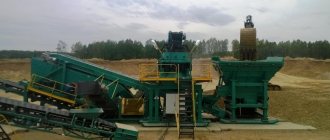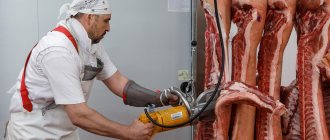General document structure
In the turner's work instructions, some points may vary, depending on the size and specifics of the enterprise. The rights and responsibilities of the machine operator are mandatory, depending on the category. The abilities and skills, requirements for the professional standard of a general-purpose turner and a low-skilled assistant are described in detail. A standard document contains main sections.
- General situation. Includes information about the machine operator's subordination and educational requirements.
- Job responsibilities and work performed, taking into account qualifications.
- Responsibility of the performer of certain types of work.
- Machine operator's rights.
The job description is developed on the basis of the issued order of the chief manager. It regulates the conditions for the hiring and dismissal of a machine operator, his subordination. The list of responsibilities indicates what a turner of each category must know and be able to do.
As required by labor legislation, 1 copy of the instruction is kept by the chief manager of the enterprise, 2 copies by the head of the unit to whom the worker is directly subordinate. If desired, a copy of the instructions is made to the worker and given to him.
Responsibilities of a turner
All the duties of a turner fit into 3 points.
- Preparing for work.
- Carrying out work in accordance with technical documentation and assignments.
- Checking the dimensions and class of roughness on completed parts. Self-control of quality.
For high-quality manufacturing of products, it is important to conscientiously perform the duties of a turner when preparing workpieces for processing. He must:
- check the markings on forgings and castings, or paint on rolled products;
- carry out a visual inspection for defects;
- make sure the sizes match;
- check the accompanying documentation.
Responsibilities of a turner
If defects or discrepancies in size and material are detected, you must immediately inform your immediate supervisor without starting processing.
Machine operators with low qualifications and little experience are required to know their own and similar equipment and conscientiously sharpen parts on it. The instructions expand the job responsibilities of universal turners. In addition to processing parts with a high accuracy class and complex configuration, they are required to train machine shop operators with 2nd and 3rd category. A general-purpose turner usually has assistants or apprentices. He conveys to them his processing experience, the characteristics of different materials, the basics of using devices and specialized tools. All this is written down in the job description of a machine operator with a high rank.
Only by independently checking the part in all dimensions can a turner of any level be confident in the correctness of its manufacture and hand over his products to the acceptance team or transfer them for further processing.
High-quality task performance is impossible without self-control.
Measuring manufactured parts
Inspection of threaded surfaces
The responsibilities of a turner of any level include maintaining the machine and workplace clean and tidy.
Job description of a turner 2-6 categories
Professionals in a highly specialized field are highly valued. This is especially true now for highly qualified blue-collar workers, who are desperately lacking in production.
What will help you decide whether it is worth getting this kind of profession and working in this field? Detailed study of the proposed specialization. This article will discuss in detail the job description of a turner from 2 to 6 categories.
You will learn what a specialist of one or another qualification needs to know and be able to do. So, what can a job description tell you about this profession?
What is a job description?
The instruction in question is a special document that contains the responsibilities and working conditions of a specific company employee. In such regulations, as a rule, each employee is assigned a specific set of tasks that he is required to perform in the course of his professional activities (for example, the job description of a turner-miller).
However, the Labor Code does not oblige management to conclude job descriptions with new employees. However, for the most part, managers prefer to prepare such documents in advance for each specific position.
For all civil and municipal employees, the job description is the main document that regulates their professional activities.
How does the provision in question differ from the employment contract that management concludes with employees? As a rule, a job description is not drawn up for each individual employee indicating his personal data.
It is formed in a generalized form for a certain specialization as a whole. Thanks to the presence of a job description, it becomes possible to avoid a colossal number of disagreements between employees and management.
It describes all the nuances of the professional responsibilities of a particular employee.
Why do you need a job description?
What goals does the company's management pursue when creating these types of documents? Among them are the following:
- rational distribution of responsibilities among employees;
- formation of a platform for resolving labor disputes;
- fixing professional discipline;
- improving employee performance;
- rational selection of candidates for positions;
- regulation of relationships within the employee/subordinate line;
- formation of the legal basis for the functioning of a specialist.
How does a job description benefit employees?
- Precise formulation of the employee’s responsibilities and professional functions.
- Absolute order in the distribution of obligations.
- Understand the criteria used to evaluate job performance.
- Resolving any controversial issues related to professional activities.
It is important to understand which sections are contained in the document in question and what information is described in them:
- General provisions. The main legal aspects are revealed here, for example, the title of the position, the presence and number of subordinates, the immediate supervisor, qualification requirements, who can replace the employee during absence (vacation, time off, sick leave).
- Rights. Contains a list of the employee's legal options.
- Job responsibilities. A detailed description of the functions that the employee must perform.
- Responsibility. Talks about the punishments that exist within the framework of Russian legislation, which a worker will be forced to bear for violating or ignoring his professional duties.
- Final provisions. Considers the features of the entry into legal force of a document and the possibility of changing its text.
Description of the profession
What features of specialization does the job description of a turner reveal? This is a specialist whose responsibilities include machining a variety of parts made of hard materials (for example, wood, metal or plastic) using special equipment (a lathe). The latter are divided into metalworking and woodworking, depending on what type of material is used. There are also several different specializations, among which the job description is written:
- Turner-borer.
- Front turner.
- Carousel turner.
- Revolver turner.
- Turner-sharpener.
- All-round turner.
- Turner-miller.
What information does a turner's job description contain? Let's look further.
Medical contraindications
The turner's production instructions contain practically no contraindications for medical reasons. For example, among them the following few points are distinguished:
- dysfunction of the visual and auditory apparatus;
- diseases of the musculoskeletal system;
- disorders of the cardiovascular and nervous systems.
2nd category
The job description of a 2nd category turner at the beginning indicates who is the employee’s immediate superior, as well as who replaces him during periods of absence. The following outlines some of the qualification requirements. So, the standard instructions for a 2nd category turner oblige him to know:
- design and basic principles of operation of lathes;
- system of landings and admissions;
- features of the use of binding and cooling liquids;
- how control and measuring instruments are arranged.
What are the main job responsibilities of a 2nd category turner?
- Processing of parts on universal lathes (simple and medium complexity).
- Control of equipment with center heights from 650 to 2000 millimeters.
- Thread cutting.
- Cleaning the workplace.
What does the job description of a 2nd category turner say about the rights of workers?
- Can assign tasks to subordinates and monitor their implementation.
- Has the right to make requests for documents necessary to clarify the specifics of professional activity.
- Can interact with other departments of the enterprise.
- Can offer options for improving the mechanism for performing work.
- Encourage subordinates.
- Report violations to management.
The employee is responsible for complying with rules and regulations, as well as management instructions.
3rd category
What is the difference between the job description of a 3rd category turner?
Such an employee must understand how lathes are designed, how to set them up and check them for accuracy; how to operate large-sized machines; how to use a plasmatron and so on.
The main responsibilities of a 3rd category turner are the following: working with thin-walled parts, cutting threads (including vortex heads), working with workpieces made of micalex and mica, controlling new lifting and transport equipment from the floor.
The turner's work instructions determine that he is financially responsible for the condition of the equipment on which he works. He is also responsible for the implementation of rules and regulations, internal regulations.
4th category
What is special about the job description of a 4th grade turner? Such a specialist must have a good knowledge of how different types of lathes are designed and function; what are the design features of specialized devices; how to install plasma heating and set up a plasma torch.
Thus, as a rule, such a turner is engaged in processing and laying complex parts, working with a plasma installation, and processing graphite products in order to produce hard alloys.
The employee is responsible for compliance with safety regulations and internal rules.
5th category
What is the difference between the job description of a 5th grade turner? Such specialists are also called planers. They must know the basic theory of metal cutting, the rules of sharpening and heat treatment of cutting tools, and understand the characteristics of grinding wheels, as well as how they are used.
The job description of a 5th grade turner assumes that he will be engaged in planing large-sized parts that require precise alignment and combined fastening, as well as planing complex parts (including those that have a large number of hard-to-reach machined surfaces, both external and internal) .
The planer is responsible for compliance with the requirements of internal regulations, financial responsibility for the condition of the equipment and the reasonable use of materials.
6th category
The job description of a 6th grade turner differs in a number of points from the previously described documents.
These are experienced specialists who are well versed in the design and rules for checking the accuracy of operation of various machines, alternative ways to achieve the required cleanliness, alignment of complex parts, have the skills of plasma mechanical processing, and perform the calculations necessary to perform complex turning work.
The job description of a 6th grade turner suggests that this specialist must do the following: processing turning rollers, working with complex large parts on unique machines, processing expensive or experimental parts, cutting multi-start threads, finishing and polishing tools of various configurations.
Conclusion
So now you have a much clearer idea of what being a wood turner entails. Working in this specialized niche requires extensive training and special education.
As can be seen from the job description, a turner must have a colossal amount of knowledge and practical skills, which he can subsequently use in his professional activities.
If you are considering the specialization of a turner as your vocation or, on the contrary, you want to change your current job and retrain, then you have a lot of work to do.
A turner works on high-tech equipment, producing parts of varying complexity, with different numbers of machined surfaces, made from various materials.
These workers bear enormous responsibility for themselves and their subordinates, compliance with safety regulations in their department, adherence to the established internal regulations of the enterprise, as well as financial responsibility for the equipment they work on and for expensive parts and materials.
Such specialists are highly valued by management; they often put forward valuable proposals for improving the functioning of the unit, which are later put into operation.
A job description can tell a lot about a profession. This document describes the basic requirements for a representative of this specialization, his rights and responsibilities. Studying this kind of instructions can be a useful tool for subsequent quality work.
Source: https://FB.ru/article/303791/doljnostnaya-instruktsiya-tokarya—razryada
Sample instructions depending on the category
The list of functions of a turner includes a detailed description of his professional knowledge and skills, which he is able to perform, depending on his category. The requirements for the level of knowledge are spelled out equally in all instructions. The professional standard for a turner includes secondary and specialized education. A high-level specialist is required to undergo special courses and training to improve his qualifications.
2nd category
The simplest requirements are contained in the job description of 2nd category turners:
- be familiar with the device of the machine;
- know the instrument;
- what are coolants made of?
- where are lubricants used;
- name and purpose of devices;
- be able to sharpen cutters at the correct angle;
- understand the meaning of tolerances and apply them in work;
- distinguish roughness;
- carry out processing according to 12–14 quality, including cutting threads with dies and taps.
Job description of a 2nd category turner
The instructions for a 2nd category machine operator include responsibilities for chip removal. In addition, he has the right to undergo training and certification to obtain higher qualifications.
Download the job description for a 2nd category turner
3rd category
The general section of the job description for a 3rd category turner states that he must have a certain amount of work experience in his specialty. The duration is determined by each enterprise individually, depending on the complexity of the products.
According to the operations performed, the job description determines the knowledge and skills of the machine operator, except for those described for the 2nd category worker:
- check the accuracy of universal machines and adjust their operation;
- know the principle of controlling large-sized turning equipment;
- processing of workpieces according to grade 7–11 on universal machines;
- performing processing of complex parts according to 12 – 14 qualifications;
- know the angles and sharpen tools with carbide inserts;
- use a plasma torch and complex devices;
- operate lathes with center heights of 2000 – 10000 mm;
- calculate the angle of rotation of the caliper for turning cones;
- process castings and mica blanks;
- perform deep drilling;
- sharpen long shafts with allowance for grinding.
Download the job description for a 3rd category turner
Considering the size of the equipment and the large weight of the workpieces and parts, a 3rd category turner must have a sling operator’s certificate and independently hook the workpieces, install them on the machine using a crane, remove the finished parts, and transfer them further.
4th category
The job description of a 4th grade turner additionally provides:
- knowledge of machine kinematics;
- geometry, heat treatment and sharpening with finishing of cutting tools;
- be able to calibrate a profile of average complexity;
- process long and thin-walled parts.
Download the job description for a 4th grade turner
A 4th category specialist must not only work with a plasma torch, but also be able to configure it and adjust the cooling of the equipment.
Job description of a 4th grade turner
In addition to turning center machines, the machine operator must know the principle of controlling equipment that has 3 supports.
5th category
The job responsibilities of a general purpose turner, which includes 5th category specialists, differ from the previous ones not only in the complexity of the work performed. The general part states that in addition to education, he must undergo various training and advanced training courses.
The job description of a 5th grade turner indicates the need to train machine operators with low qualifications in work techniques. Be sure to share with them knowledge on the features of processing various materials. The responsibilities of a highly qualified specialist include:
- processing and finishing of parts with a complex configuration according to the 6th – 7th qualification;
- cutting multi-start threads;
- finishing cutting of worms;
- processing of large-sized complex units and parts;
- grooving and profile correction of rolling rolls made of high-alloy steels.
Download the job description for a 5th grade turner
Specialists of the 5th category are trusted to process ship shafts and cylinder liners. They have assistants who, in addition to training, are engaged in cleaning up shavings.
Station wagon 6th category
At most enterprises, the list of specialties does not include the top professional standard, 6th grade turner. Not all products require such high processing skills for a turner. The job description states that a worker at the professional standard level must train young workers, pass on to them his experience and methods of quality work. In addition, he can check the work of other turners.
Turner of the sixth category
The professional standard all-rounder works with parts of any complexity of grades 1–5. His responsibilities include refractory and tool alloy parts, including calibration of complex surfaces.
Download the job description for a 6th grade turner
Job description of a turner - sample 2020 and how to draw it up, rights and responsibilities
A turner's job description is an important document that guides employees in their work activities.
It must clearly state the job duties, responsibilities of the employee, the requirements for him, the category, and the type of work he performs.
The instructions are being developed on the basis of the ETKS (Unified Tariff and Qualification Directory), which indicates the features of turning work for turners of different categories, as well as Order of the Ministry of Labor of the Russian Federation N 1128n (dated December 25, 2014).
Today we’ll talk about how to draw up such instructions for a turner, and what to include in it.
How to compose: general provisions
In the first section of the document, it is necessary to give a general description of the position, describe a list of basic requirements for the employee, as well as the amount of knowledge and skills required of him.
This paragraph must necessarily contain the following information:
- turner rank;
- the procedure for filling a position, appointment and dismissal, indication of the immediate superior;
- requirements for employee qualifications;
- information about medical examinations;
- procedure for undergoing briefings;
- conditions of permission to work.
It is also necessary to characterize the knowledge required from the employee. As a rule, a turner should know:
- principle of operation, design of the machine used;
- rules for using measurements of various devices and their instruments;
- the procedure for sharpening corners, installing drills and cutters;
- chemical composition of lubricants, their properties;
- features of the use of various cutting accessories;
- rules for using universal devices used in work.
When drawing up instructions, it is necessary to be guided by the ETKS and the professional standard (40.078), which provides a complete description of the labor functions, skills and necessary knowledge for each category of profession.
Job responsibilities: what a turner is entitled to and his responsibilities
The next section of the instructions should contain a list of the worker’s responsibilities. The work functions of a turner may include:
- processing blanks of simple and complex parts with varying degrees of accuracy, monitoring the quality of processing;
- cutting threads on workpieces;
- carrying out work on setting up, commissioning, maintenance of lathes, checking their performance;
- carrying out routine maintenance of machines;
- study and application of technical documentation;
- selection, preparation, installation of universal devices on the machine;
- performing surface turning.
The knowledge required to perform the work should also be listed:
- fundamentals of mechanical engineering drawing;
- rules for reading drawings, technological maps, technical documentation;
- devices, conditions and rules for using universal devices, cutting tools used in work;
- the procedure for receiving, storing and using workpieces, devices, tools;
- properties of materials;
- purpose and procedure for using lubricants and cooling materials;
- the types of work used and the procedure for monitoring product quality in production.
A separate section in the instructions prescribes the rights of the employee, including:
- obtaining documents and materials necessary for work;
- familiarization with draft decisions and documents relating to his work activities;
- putting forward proposals for improving work;
- instructions to his subordinate employees.
The rights of the employee, his rights and obligations are also prescribed in his employment contract, internal regulations, and instructions on the type of work for a turner.
About half of the fines issued by inspection bodies are fines for incorrect execution or lack of labor protection documents. In this regard, it is necessary to pay attention to the presence of the necessary rules and instructions at the enterprise.
The turner's liability may include:
- failure to perform (improper performance) of the duties provided for in the job description;
- violation of the provisions of the instructions in force at the enterprise;
- offenses committed in the workplace;
- causing material damage;
- failure to comply with internal regulations, orders and instructions in force at the enterprise.
Generalist turner
You can find the standard lathe operator's instructions here: https://yadi.sk/i/rEYcbxzf3U7s4x
Turner-borer
At the following address we have posted an example of instructions for a boring lathe: https://yadi.sk/i/8HIor6Zm3U7tuU
Turner-revolver
We suggest downloading a document of this type at the following link: https://yadi.sk/d/bYg1A4tr3U7uyv
2 digits
You can find an example of instructions for a second-class worker here: https://yadi.sk/d/k0zkn7ff3U7vbC
3 digits
Third-class turners most often work according to the following type of instructions: https://yadi.sk/i/rStZcKzq3U7wFq
4 digits
The document form for a fourth-grade employee looks like this: https://yadi.sk/i/KOgRnoUX3U7wVM
5 ranks
You can find a sample instruction manual for a fifth-grade turner in a machine shop at the following link: https://yadi.sk/i/_KJYI3V93U7wf5
6 digits
Working instructions for a sixth-grade turner: https://yadi.sk/i/TUlR4xZ23U7wrd
In conclusion, it should be noted that the newest and most modern technology will be useless if there is no highly qualified specialist nearby.
The profession of a turner involves working with high-tech equipment and places the highest demands on the employees working on it.
That is why the job description should become a document that formulates a list of clear and comprehensive requirements for employees holding this position, and provide a complete description of the corresponding position.
Source: https://specworkgid.ru/baza-znanij/info/dokumenty/obrazcy-instrukcij/dolzhnostnye/tokarya.html
Responsibility and performance evaluation
The job responsibilities of a turner specify not only his rights and the work he performs. The instructions for a turner provide for responsibility, no matter how high the professional standard of the worker. The manual describes in detail the system of rewards for conscientious work and the scheme for calculating and deducting losses in the event of damage to production.
The machine operator is responsible for violating labor regulations. Punishment, depending on the severity of the violation, can be imposed administratively or under an article of civil and criminal law.
Financial liability is provided for poor quality work. Payment is made based on the results of the products turned and handed over to the receiver or craftsman. In the production of defective products, deliberate breakdown of equipment and tools, the turner is obliged to compensate for the damage or modify the parts without additional payment.
Turner's working day
A turner, like all workers at an enterprise, is obliged to observe a work schedule and strictly adhere to the internal labor regulations, which are developed and signed by management. The working day has a strictly scheduled schedule and begins at a specified time.
- Checking equipment for damage.
- Inspection of the workplace for compliance with safety rules and labor protection measures.
- Completion of daily safety and fire safety training.
- Receiving a task from a foreman or an employee of the planning and dispatch service.
- Preparation of tools and devices necessary to complete the task.
- Checking blanks.
- Manufacturing of parts.
- Checking each size for compliance with the drawing and technological dimensions.
As soon as the batches of parts are ready, they are handed over to the foreman or quality control department employee with a note in the payment documentation.
3-4 hours after the start of the shift, everyone goes on a lunch break. On small machines, a 5-10 minute rest is provided every hour, depending on the degree of intensity of the work.
At the end of the work, a 2nd and 3rd category turner working on small machines must remove the chips himself and wipe the entire machine and its components free of dirt. After this, wash and lubricate the guides. On large machines, the bulk of the cleaning work falls on the assistant. A machine operator of 4–6 categories takes part in it.
Turner's work
With a multi-shift work schedule, the machine operator is obliged to hand over the equipment to the replacement. On large units, a single processing operation may span more than one shift. In this case, the machine does not stop; the worker transfers everything to the shift worker. The shavings are removed. Dirt is wiped off only on fixed parts.
Job description of a turner for processing asbestos-cement pipes and couplings
We bring to your attention a typical example of a turner’s job description for processing asbestos-cement pipes and couplings, sample 2019.
A person with primary or secondary vocational education, special training and work experience can be appointed to this position.
Don’t forget, each turner’s instructions for processing asbestos-cement pipes and couplings are handed over against receipt.
The hr-portal website provides typical information about the knowledge that a turner should have in processing asbestos-cement pipes and couplings. About duties, rights and responsibilities.
This material is included in the huge library of job descriptions on our website, which is updated daily.
General provisions
1. A turner for processing asbestos-cement pipes and couplings belongs to the category of workers.
2. A person with secondary vocational education or primary vocational education and special training and work experience ___________ is accepted for the position of turner for processing asbestos-cement pipes and couplings.
3. A turner for processing asbestos-cement pipes and couplings is hired and dismissed by the director of the organization upon the recommendation of ___________.
4. A turner for processing asbestos-cement pipes and couplings must know:
a) special (professional) knowledge for the position:
— design and principle of operation of lathes for processing asbestos-cement products; rules for sharpening cutters;
— properties of asbestos-cement pipes and couplings;
— rules for using control and measuring instruments;
— external signs of defective pipes and couplings;
— reasons causing defects of pipes and couplings during their processing;
— ways to prevent marriage;
b) general knowledge of an employee of the organization:
— rules and regulations of labor protection, safety precautions, industrial sanitation and fire protection,
— rules for using personal protective equipment;
— requirements for the quality of work (services) performed and for the rational organization of labor in the workplace;
— types of defects and ways to prevent and eliminate them;
— production alarm.
5. In his activities, a turner for processing asbestos-cement pipes and couplings is guided by:
- legislation of the Russian Federation,
- Charter of the organization,
- orders and instructions of the director of the organization,
- this job description,
— Internal labor regulations of the organization.
6. A turner for processing asbestos-cement pipes and couplings reports directly to _____________ a worker with higher qualifications, the head of production (site, workshop) and the director of the organization
7. During the absence of a turner for processing asbestos-cement pipes and couplings (business trip, vacation, illness, etc.), his duties are performed by a person appointed by the director of the organization upon the recommendation of ______________ in the prescribed manner, who acquires the corresponding rights, duties and is responsible for the fulfillment of the duties assigned to his responsibilities.
The job responsibilities of a turner for processing asbestos-cement pipes and couplings are:
a) Special (professional) job responsibilities:
— Boring of asbestos-cement couplings on a machine, turning the ends of asbestos-cement pipes of various diameters.
— Trimming the ends of asbestos-cement pipes, cutting pipes and couplings on a semi-automatic machine or on a machine with manual caliper feed.
— Setting up the machine when switching to processing couplings or pipes of a different diameter.
— Cleaning and lubrication of the machine.
— Elimination of minor faults in the machine being serviced.
— Participation in machine repair work.
b) General job responsibilities of an employee of the organization:
— Compliance with the internal labor regulations and other local regulations of the organization, internal rules and regulations of labor protection, safety precautions, industrial sanitation and fire protection.
— Fulfillment, within the framework of the employment contract, of the orders of the employees to whom it was repaired in accordance with these instructions.
— Carrying out work on acceptance and delivery of shifts, cleaning and washing, disinfection of serviced equipment and communications, cleaning the workplace, fixtures, tools, as well as maintaining them in proper condition.
The rights of a turner for processing asbestos-cement pipes and couplings
A turner for processing asbestos-cement pipes and couplings has the right:
1. Submit proposals for management’s consideration:
— to improve work related to the responsibilities provided for in this instruction,
— on bringing to material and disciplinary liability workers who violated production and labor discipline.
2. Request from structural divisions and employees of the organization the information necessary for him to perform his job duties.
3. Get acquainted with the documents defining his rights and responsibilities for his position, criteria for assessing the quality of performance of official duties.
4. Get acquainted with the draft decisions of the organization’s management relating to its activities.
5. Require the management of the organization to provide assistance, including ensuring organizational and technical conditions and execution of the established documents necessary for the performance of official duties.
6. Other rights established by current labor legislation.
Responsibility of a turner for processing asbestos-cement pipes and couplings
A turner for processing asbestos-cement pipes and couplings is responsible in the following cases:
1. For improper performance or failure to fulfill one’s job duties provided for in this job description - within the limits established by the labor legislation of the Russian Federation.
2. For offenses committed in the course of their activities - within the limits established by the current administrative, criminal and civil legislation of the Russian Federation.
3. For causing material damage to the organization - within the limits established by the current labor and civil legislation of the Russian Federation.
Job description of a turner for processing asbestos-cement pipes and couplings - sample 2020. Job responsibilities of a turner for processing asbestos-cement pipes and couplings, rights of a turner for processing asbestos-cement pipes and couplings, responsibility of a turner for processing asbestos-cement pipes and couplings.
Source: https://hr-portal.info/job-description/dolzhnostnaya-instruktsiya-tokarya-po-obrabotke-asbestotsementnykh-trub-i-muft








